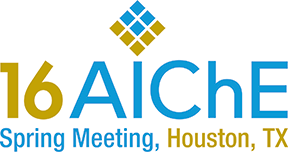

Companies worldwide are faced with the difficult challenge of managing workforce change in a time when budgets are tight, pressures to decrease costs and improve productivity are high, and the expectation to maintain safe operations is still there. This is not a new challenge, but workface changes are even more complex than in the past.
CIMA (Ship Channel Industries Mutual Aid in East Houston) is an organization with over 50 years of experience in the largest concentration of Refining, Petrochemical, and Chemical Industries in the US. I asked the head of CIMA whether there has been a significant improvement in safety, and if so, what were the contributing factors. The answer was that the single most significant factor in incident increases is when the workforce changes as a result of new processes and major shutdowns.
In today’s environment, companies have much more sophisticated technologies and streamlined supply chains, and mistakes can have severe consequences. The problems are compounded by the fact that many companies have a large number of senior employees, a large number of new employees, and few in the middle.
New employees entering the workforce today have extraordinary skills and knowledge. Successful companies will take advantage of what these employees bring by changing work processes to be more efficient and productive, while still utilizing the experiences of the more senior workforce.
DuPont Sustainable Solutions (DSS) has identified a multi-part process to help companies thrive in this time of workforce change. Some of the important features of each step are described below:
1. Identifying Critical Functions and Skills
This step identifies not only the functions and skills needed for today, but seeks those required in the future to assure competitiveness. It also provides clarity on what is done internally, and what is outsourced.
2. Creating Individual Competency Development Plans
These plans are necessary to assure growth of all personnel and can go a long way in retaining individuals that are necessary for future success.
3. Succession Planning for All Critical Positions
These plans should include an up to five year projection of new hires, promotions, reassignments, and retirements.
4. Managing Knowledge Transfer
Through assignment and mentoring, organizations should leverage the knowledge of experienced personnel. Easily accessible historical databases should also be developed.
5. Using a Blended Learning Approach
Individual training plans should be developed. Personnel are encouraged to participate in internal and external opportunities.
6. Cultivating Learning Communities
Leadership needs to be strong on driving involvement in internal and external networks.
7. On-Boarding Process for New Employees
The on-boarding process is critical to the success of new employees. Two key factors are initial assignments that are challenging and meaningful and a mentorship program to help assure success.
8. Cultural Environment
This multi-faceted subject may require a company to evolve in order to take advantage of the workforce skills and expectations of employees entering the workforce for the first time. One examples is looking at whether the work environment is sensitive to the needs of women? The company may have an older phone system that doesn’t pick up a higher pitched voice or the company may not allow employees to work from home when needed, such as caring for a sick child. Other items to consider - does the organization promote using team work for problem solving? Does the organization value speed in implementation?
An example of a major change in operations at a chemical facility will be provided to demonstrate one of the important tools that is used to manage a change. The change involves the consolidation of two separate operating areas and focuses on identifying key PSM skills and experience, and managing the change while faced with retirements, developmental transfers, new hires, promotions, and transfers.
